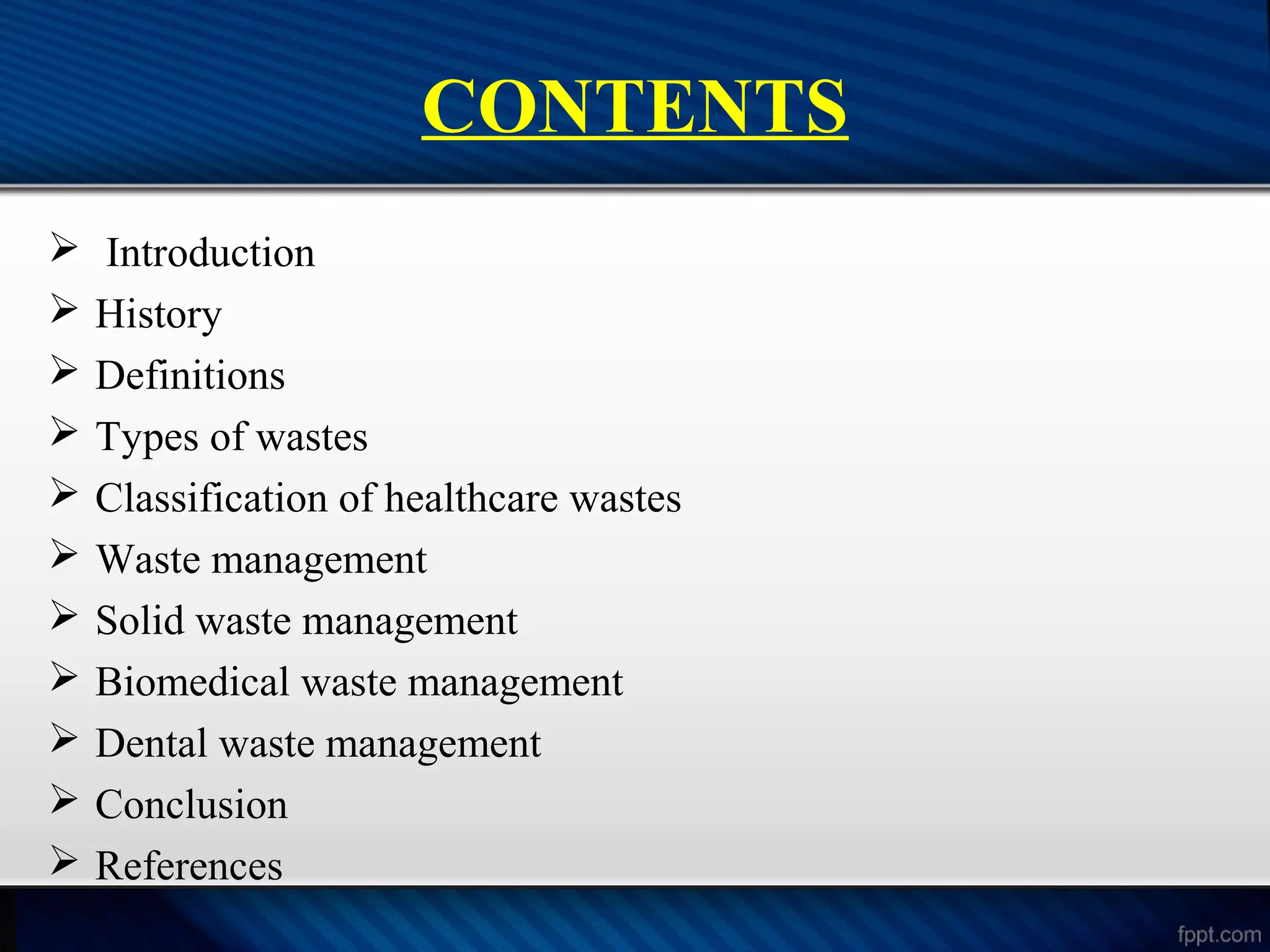This document provides an overview of biomedical waste management. It begins with definitions of key terms like biomedical waste and discusses the types of wastes generated from healthcare facilities. It covers the history of regulations around biomedical waste and the key Indian laws from 1998 and 2011. Methods of waste management are summarized, including segregation, treatment approaches like incineration, and final disposal. The roles and responsibilities of waste generators and operators are also mentioned. Overall, the document aims to introduce the topic of biomedical waste management and the approaches and regulations around safe handling of this waste.
















![• Health care Waste: means all the waste generated by
Hospital establishments, research facilities, and
laboratories. In addition, it includes the waste
originating from "minor" or scattered sources such as
that produced in the course of health care undertaken
in the home (dialysis, insulin injections, etc.)
• [Pruss, A., Giroult, E., and Rushbrook P. et. al; "
Safe Management of Wastes from Health-Care
activities", World Health Organisation, , Geneva,
1999. ]](https://image.slidesharecdn.com/biomedicalwastemanagement-140819014455-phpapp02/75/Biomedical-waste-management-17-2048.jpg)






































































































